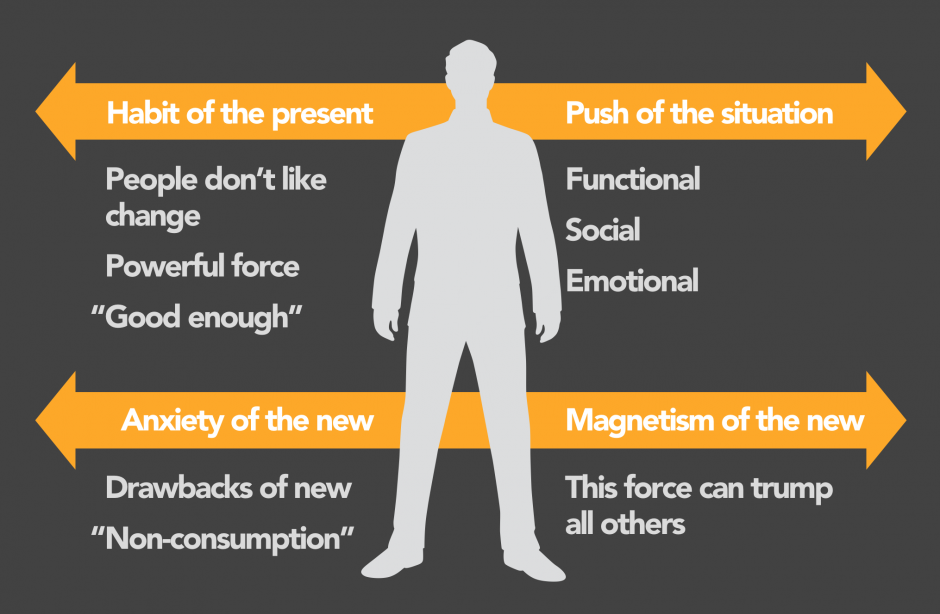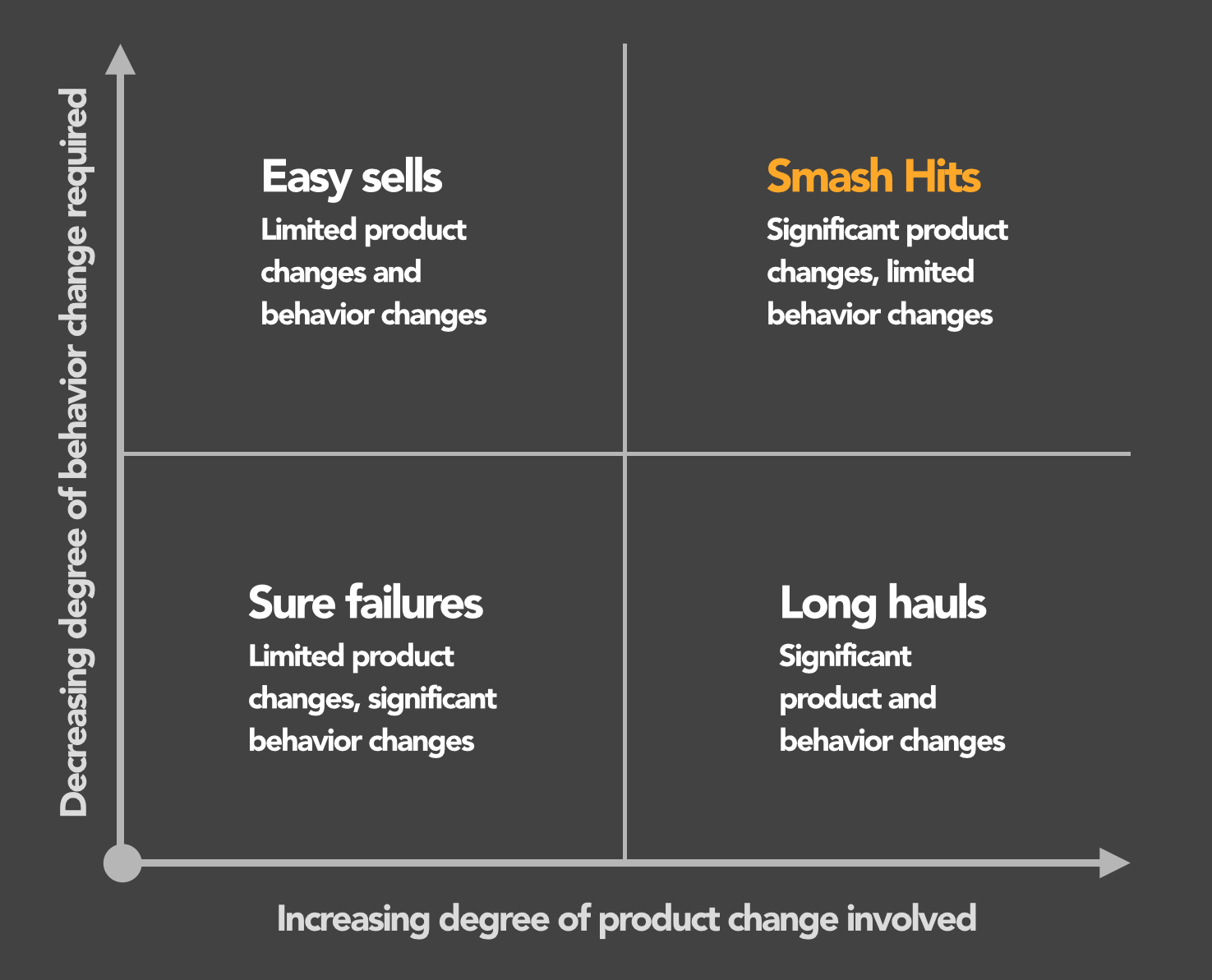“Eager Sellers and Stony Buyers: Understanding the Psychology of New-Product Adoption” by John T. Gourville provides support and context to better understand The Rewired Group’s Four Progress Making Forces Diagram. In particular, the article provides context for the push and pull concepts within the four forces diagram outlined below (and includes some of Clayton Christensen’s innovation concepts aded for good measure).

The article explains the psychology behind consumer behavior and how sellers (or product designers) can tap it to increase sales. Some takeaways:
- The likelihood that someone will buy is based more on perceived value than actual value.
- Consumers use a reference point—something they already own or use—as a way to compare a potential new purchase.
- This reference point acts as a way to judge the new option. If the new option is perceived to be better than its reference point, it’ll be viewed as a positive or a gain. If it’s perceived to be relatively inferior, it’ll be seen as a negative or a loss.
- Losses have greater psychological impact than similarly sized gains and will therefore lead people to value that which they already own or use (the “endowment effect“). Buyers value losses at about three times the rate of gains while sellers value gains by a factor of three over losses. Combined, the gap between buyers and sellers can be 9x.
All of these points and the supporting documentation that Gourville includes speaks directly to the idea behind two of the four forces– the habit of the present and the anxiety of the new. They help you understand why people resist innovations, even ones that will benefit them.
On the flip side are the other two forces—the push of the situation and the magnetism of the new—that entice and encourage the adoption of new products and services. The article explains that anything new is ultimately judged as a series of trade-offs. A consumer will gain something here, but lose something there. If, in aggregate, the gains outweigh the losses, the new thing can win a convert.
One way to view the landscape is to say that sellers “…create value through product change, but they capture that value best by minimizing behavior change. That results in a simple but powerful matrix.”

As you might guess, sellers want to find themselves in the “smash hits” quadrant. They typically require consumers to change their behavior as little as possible while experiencing great gains in terms of what the new product or service offers. The trick is to reduce behavior changes on the part of consumers and/or increasing the value gained in switching to the new offer. Some advice:
- Be patient: Adoption will likely be slow, so plan on that being the case. This obviously has implications on how you manage resources since you may need to run lean for longer than you’d like.
- Strive for improvement: Increase the perceived gains so that they outweigh perceived losses as much as possible. Perhaps this means you need to delay a launch or wait for the status quo to naturally change in your favor.
- Eliminate rival products or services: This is easier said than done, but you can tip the scales in your favor through regulatory bodies who can use their powers to help your cause.
- Align behaviors: Build products or services that work with customers’ current behaviors, if at all possible.
- Target non-consumption: You can avoid the endowment effect by finding customers that don’t already use an existing product or service. That population won’t have ingrained behaviors that could pose a problem.
- Preach to the choir: Seek out people who are actively willing to adopt your innovation and let them advocate on your behalf.